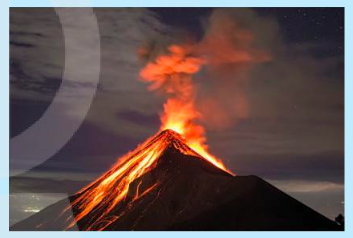Tiếng Anh 8 Unit 9 Skills 11. Match the headlines (1 - 2) with the natural disasters (A - B). 2. Read the two news articles. Matched the highlighted words with their meanings. 3. Read the articles again and answer the questions. 4. Work in pairs. Match the questions with the answers. 5. Work in groups. Prepare a short piece of news about the natural disaster in 4 or one you know of. Report the news to the class. Tổng hợp đề thi học kì 2 lớp 8 tất cả các môn - Kết nối tri thức Toán - Văn - Anh - Khoa học tự nhiên
Lựa chọn câu để xem lời giải nhanh hơn
Bài 1 Video hướng dẫn giải 1. Match the headlines (1 - 2) with the natural disasters (A - B). (Ghép các tiêu đề (1 - 2) với các thảm họa thiên nhiên (A - B).)
Lời giải chi tiết: 1 - B: 30 seconds of a slight shaking in Hanoi – earthquake (30 giây rung lắc nhẹ ở Hà Nội – động đất) 2 - A: A thick layer of ash covers Tonga - volcanic eruption (Một lớp bụi tro dày che phủ Tonga – núi lửa phun trào) Bài 2 Video hướng dẫn giải 2. Read the two news articles. Matched the highlighted words with their meanings. (Đọc hai bài báo. Nối các từ được đánh dấu với ý nghĩa của chúng.)
A volcano in the South Pacific erupted violently last Saturday. It hit Tonga, an island country in the area. The eruption sent a cloud of ash and gas into the air. People could see this cloud from 20 kilometres away. The eruption also caused a tsunami which flooded properties in Tonga’s capital. Besides, it destroyed hundreds of homes on some small islands. More than twenty people on these islands are still missing. New Zealand sent two big ships to Tonga to help the victims yesterday.
Residents in tall buildings in Ha Noi were frightened when they felt a slight shaking for about 30 seconds last night. “I was watching TV when my building started trembling. Books, lights, and other things also moved”. Ms Nguyen Ha, a resident in the Sunshine Building, shared. Many people living in the building ran out of their homes in fear. According to scientists, a strong earthquake in China caused this shaking. Luckily, there was no damage.
Phương pháp giải: Tạm dịch: Một ngon núi lửa ở phía nam Thái Bình Dương phun trào dữ dội vào thứ bảy tuần trước. Nó đánh vào Tonga, một quốc đảo trong khu vực. Vụ phun trào đã gưa một đám mây đầy tro và khí độc vào không khí. Mọi người có thể thấy đám mây này từ ví trí cách xa 20 ki-lô-mét. Vụ phun trào cũng gây ra sóng thần đã làm ngậm lụt tài sản ở thủ đô của Tonga. Bên cạnh đóm nó cũng phá hủy hàng trăm ngôi nhà nhôi nhà trên vài đảo nhỏ. Hơn hai mươi người trên những đảo này vẫn đang mất tích. Niu Di-lân đã gửi hai tàu lớn đến Tonga để giúp đỡ những nạn nhân ở đây. Cư dân trong những tòa nhà cao tầng đã gây hoảng sợ khi họ cảm nhận được một sự rung lắc nhẹ trong khoảng 30 giây tối qua. “Tôi đang xem ti vi khi mà tòa nhà của tôi bắt đầu rung lắc. Sách, đèn và những thứ khác cũng rung nữa.” Cô Nguyễn Hà, một cư dân tại tòa nhà Sunshine chia sẻ, có rất nhiều người sống trong tòa nhà đã chạy ra khỏi nhà trong hoảng sợ. Theo các nhà khoa học, một trận động đất mạnh ở Trung Quốc đã gây ra sự rung lắc này. May mắn là không có thiệt hại gì. Lời giải chi tiết: 1 - d: violently - very strong (mãnh liệt/ dữ dội – rất mạnh) 2 - e: tsunami - very large waves in the sea (sóng thần – một con sóng rất lớn ở trên biển) 3 - a: missing - not yet found (mất tích – chưa tìm thấy) 4 - b: trembling - slightly shaking (rung lắc – lắc nhẹ) 5 - c: fear - the bad feeling you have when you are frightened (nỗi sợ - cảm giác tồi tệ khi bạn cảm thấy sợ hãi.) Bài 3 Video hướng dẫn giải 3. Read the articles again and answer the questions. (Đọc lại bài viết và trả lời câu hỏi) 1. Where and when did the eruption happen? (Khi nào và ở đâu vụ phun trào xảy ra?) 2. What did the eruption cause? (Vụ phun trào gây ra cái gì?) 3. What were the other effects of the eruption? (Những ảnh hưởng khác của vụ phun trào là gì?) 4. How long did the buildings shake? (Các tòa nhà lắc trong bao lâu?) 5. What caused the shaking? (Điều gì gây ra sự rung lắc?) Lời giải chi tiết: 1. A volcano in the South Pacific erupted violently last Saturday . (Một ngọn núi ở phía nam Thái Bình Dương đã phun trào rất dữ dội vào thứ bảy tuần trước.) 2. The eruption also caused a tsunami which flooded properties in Tonga’s capital (Vụ phun trào cũng gây ra một cơn sóng thần làm ngập lụt tài sản ở thủ đô của Tonga.) 3. It destroyed hundreds of homes on some small islands. More than twenty people on these islands are still missing. (Nó đã phá hủy hàng trăm ngôi nhà trên những hòn đảo nhỏ. Hơn hai mươi người trên đảo vẫn đang mất tính.) 4. The buildings shake for about 30 seconds. (Các tòa nhà đã lắc trong 30 giây.) 5. A strong earthquake in China caused this shaking. (Một trận động đất mạnh ở Trung Quốc gây ra sự rung lắc này.) Bài 4 Video hướng dẫn giải 4. Work in pairs. Match the questions with the answers. (Làm việc theo cặp. Phù hợp với câu hỏi với câu trả lời.)
Lời giải chi tiết: 1 - c: What kind of natural disaster was it? - It was a serious flood. (Đó là loại thiên tai nào? – Đó là một trận lũ nghiêm trọng.) 2 - e: When and where did it happen? - It happened in a village in Phu Yen last week. (Nó xảy ra khi nào và ở đâu? – Nó xảy ra ở một ngôi làng ở Phú Yên vào tuần trước.) 3 - a: What caused it? - Five days of heavy rain caused it. (Điều gì gây ra nó? – Năm ngày mưa to gây ra nó.) 4 - b: What were its effects? - Many houses were flooded, two villagers died, and five others were missing. (Ảnh hưởng của nó như thế nào? – Nhiều ngôi nhà bị ngập lụt, hai dân làng đã chết, và năm người khác vẫn còn đang mất tích.) 5 - d: How did people help the victims? - Rescue workers looked for the missing people, and volunteers gave food and drinks to the victims. (Mọi người giúp các nạn nhân như thế nào? – Nhân viên cứu hộ đi tìm những người mất tích và những tình nguyện viên đưa thức ăn và nước uống cho các nạn nhân.) Bài 5 Video hướng dẫn giải 5. Work in groups. Prepare a short piece of news about the natural disaster in 4 or one you know of. Report the news to the class. (Làm việc nhóm. Soạn một đoạn tin ngắn về thảm họa thiên nhiên ở 4 hoặc một tin tức mà em biết. Báo cáo tin tức cho cả lớp) Example: (Ví dụ) Five days of heavy rain caused a serious flood in a village in Phu Yen. The flood happened last week. ... (Năm ngày mưa to đã gây ra một trận lụt nghiêm trọng tại một ngôi làng ở Phú Yên. ...) Lời giải chi tiết: Five days of heavy rain bring a serious flood to a village of Phu Yen last week. Many houses were flooded, two villagers died, and five others were missing. Local authorities had sent rescue workers to look for missing people. Volunteers from other villages delivered food and drink to the victims. (Năm ngày mưa to đã gây ra một trận lụt nghiêm trọng tại một ngôi làng ở Phú Yên. Nhiều ngôi nhà bị ngập lụt, hai dân làng đã chết, và năm người khác vẫn còn đang mất tích. Các nhà chức trách địa phương đã gửi đội cứu hộ đi tìm những người mất tích. Tình nguyện viên từ những làng khác vận chuyển thức ăn và nước uống đến nạn nhân.)
>> Học trực tuyến lớp 8 trên Tuyensinh247.com. Đầy đủ khoá học các bộ sách: Kết nối tri thức với cuộc sống; Chân trời sáng tạo; Cánh diều. Cam kết giúp học sinh lớp 8 học tốt, hoàn trả học phí nếu học không hiệu quả. PH/HS tham khảo chi tiết khoá học tại: Link
|





















